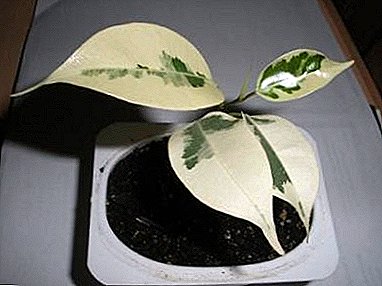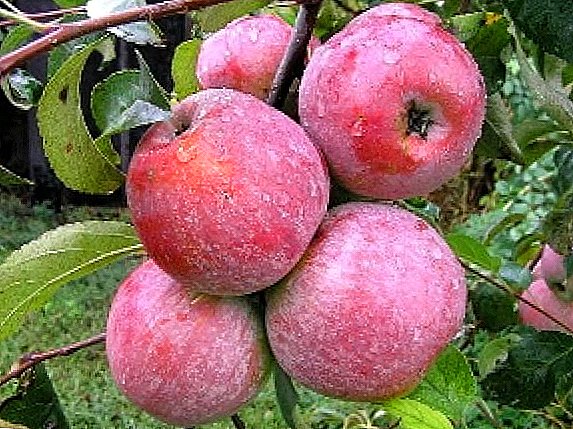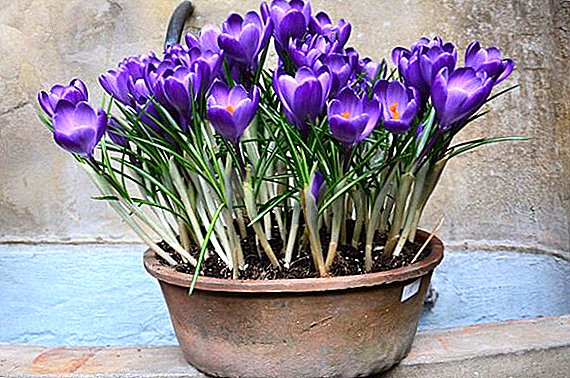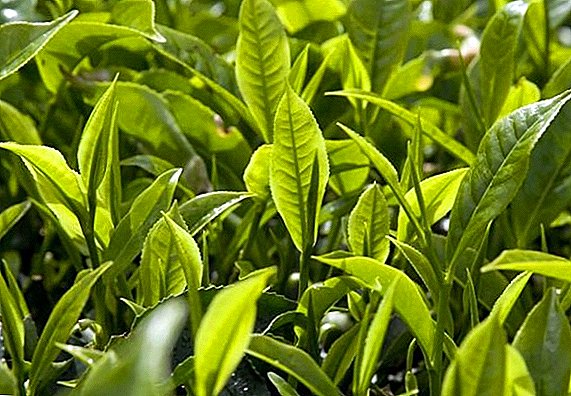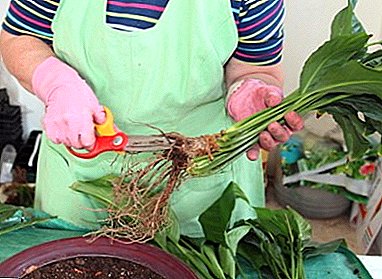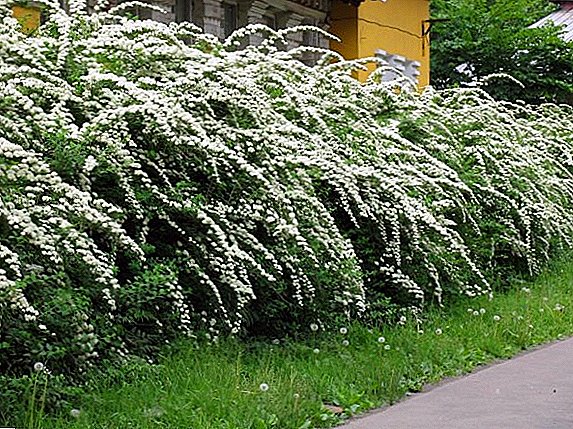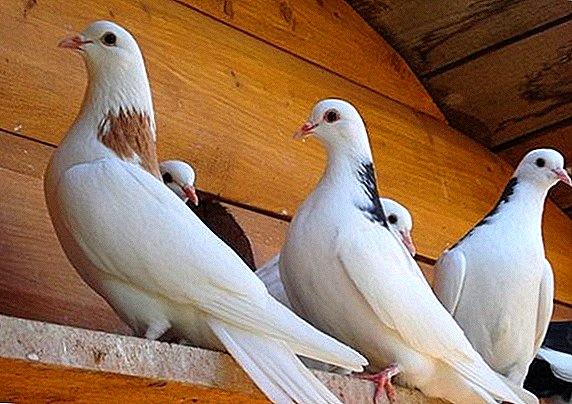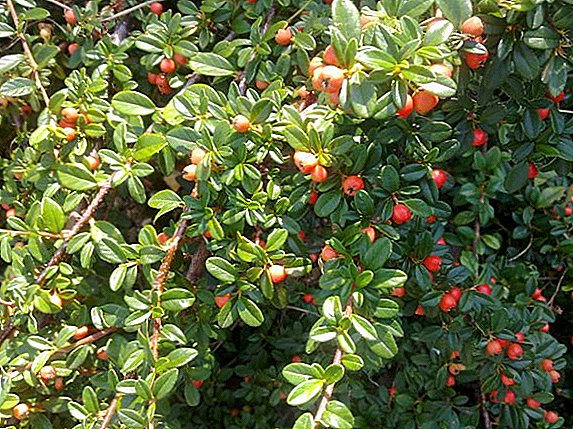 Kizilnik many-flowered belongs to the bushes family Pink. Eastern Siberia is considered its birthplace, but it is extremely rare in the wild and even listed in the Red Book.
Kizilnik many-flowered belongs to the bushes family Pink. Eastern Siberia is considered its birthplace, but it is extremely rare in the wild and even listed in the Red Book.
The value of the shrub is not manifested in the fruits, but in its decorative qualities. In this article we will look at how to decorate your garden with the help of this plant.
Did you know? Some people think that cotoneaster and dogwood are the names of one plant. However, they are united only by a consonant name, since these plants are from different families. The fruit of the cotoneaster is completely unsuitable for consumption, and the cornel is edible.
Kizilnik many-flowered: description of semi-evergreen shrub

Cotoneaster many-flowered - semi-evergreen shrub, with which gardeners love to decorate their plots. It can reach a height of 3 m, it can be used both in single landings and in group ones. The leaves are shrub broadly ovate, up to 5 cm long. In autumn they are purplish-red in color, in spring they are silver-gray, and in summer they become dark green.
The branches of this plant are thin and curved, in youth have a slight felt pubescence. In the thyroid inflorescences are quite large white flowers. They can reach 1 cm, and their number in each inflorescence can vary from 6 to 20. In the autumn fruits appear that additionally decorate a multi-flowered shrub with their bright red color. Also, the plant boasts good frost and drought tolerance.
Kizilnik multiflorum - the pros and cons of growing species
In the cotoneaster many-flowered a lot of advantages. One of them is that he can wonderfully complement the plant composition without requiring much attention from the gardener. Cotoneaster - a frost-resistant plant, it is not afraid of dampness and drought. It will be good to grow and feel comfortable on any soil, and the plant blooms mainly in the shade.
Dust, dirty air and gases are not afraid of him. But with all the above-mentioned advantages of the plant, there is one drawback. To preserve the shape and attractiveness of the shrub, its branches must often be cut, otherwise they will grow and the plant's appearance will deteriorate. 
How to choose a location for growing cotoneaster
Since cotoneaster - unpretentious plant you can plant it almost anywhere. Shrub is used as a hedge, giving the dacha area accuracy and attractive appearance. The only thing you need to know when choosing a place for planting is what kind of soil and lighting the shrub prefers.
Lighting
In open sunny areas, the multicyte kizilka develops best. But if you chose a place for shrubs in the penumbra, you can safely plant a plant there - this will not affect its decorative qualities.
The soil
Almost any soil will do, but it will be more comfortable in lime. However, in shrub sandy or loamy soil will be no less well developed.
Important! Moisture stagnation or prolonged moistening of the cotoneaster does not tolerate.
How to plant a multicolored cotoneaster
Planting cotoneaster in the garden does not require special skills and the power of each. Knowing how to properly prepare the pit, the exact scheme and at what time is best to plant a plant, you will not have difficulty with planting. 
Landing dates
Cotoneaster seedlings with an open root system are planted in the fall, from late September to early November, until leaf fall begins and the first frosts begin. And seedlings with a closed root system are best planted from early spring, until the end of August, so that the shrubs are strengthened until winter.
Landing pit preparation
Before planting the multicyte kizilka, it is necessary to prepare a landing hole. For this plant, the optimal size will be a pit 50 × 50 × 50 cm. To provide it with the necessary level of water drainage, gravel or broken glass in height up to 20 cm must be poured to the bottom of the pit. Next, prepare the soil mixture: mix peat, humus, sand and 250-300 g of lime. 
Landing pattern
The landing pattern is quite simple. When planting, consider the distance from the bush to any other plant or structure: it should be from 0.5 to 2 m. This will depend on the crown size of the adult plant. When digging in the plant, you need to make sure that the root neck is flush with the surface. After planting, the ground must be tamped, watered. The soil around the trunk mulch peat layer.
Important! When planting as a hedge saplings of a multiflorous cotoneaster seedlings are best planted in a trench, not in the pits.
Terms of care for the cotoneaster multicolored
Taking care of the shrubs will not take you much time, and in return you will receive an original decoration for your garden. Proper watering, dressing and pruning - that's all you need to know when leaving.
Watering
The only thing this plant doesn't like is excess water in the root system. But the rest of the natural phenomena of the shrub will stand with dignity. Therefore, it is not necessary to water it, because even in drought it can remain without water for a long time. But if during the whole summer dry weather is observed, then it is necessary to water the plant every 14 days. After rain or watering from the site where the shrub grows, you should remove all the weeds and loosen the soil.
Sow thistle, ambrosia, nightshade, purslane, buttercup, mint, chamomile and millet absorb large amounts of nutrients and water, thereby causing significant damage to the corycanum multiflorum.
Top dressing
Growing multifloss cotyler can not do without timely feeding. This plant prefers nitrogen fertilizers in the first warm spring days. As a nitrogen supplement use granules of prolonged action. "Kemira Universal" or urea, which must be diluted at the rate of 25 g per bucket of water. Before flowering produce another dressing. To do this, take 60 g of superphosphate and 15 g of potassium per m². At the end of the season, the ground around the shrub is mulched with peat.
Pruning
Multiflorous cotoneaster reacts very well to pruning, because it is a plant from which to form all kinds of designs eg:
- cones;
- hemisphere;
- prisms and other more complex shapes.
Also, the plant should be cut off when sick, old, broken, thickening branches appeared. Over time, it is necessary to carry out anti-aging pruning, giving the opportunity to grow young branches. Such pruning is done in the spring, before the buds unfold.
The landscape design also uses the crown of the coronet, Norway maple, ash, fescue, barberry, yellow acacia, linden, left, tamariks and chamber.

How to protect a multicolored cotoneaster from pests and diseases
If the shrub became ill with fusarium, then it is necessary to remove and then burn the affected parts of the plant. It is also worthwhile to disinfect the soil, and with a strong spread of the disease, the landing area must be changed. To combat yellow bear spend spraying any organophosphate insecticide. If a multicolored cotoneaster struck aphid, then in early spring you need to use the drug "Nitrafen" or "DNOC". To defeat the larvae suitable drugs such as:
- "Metaphos";
- "Sayfos";
- "Malathion";
- Rogor.
Did you know? Instead of drugs, you can use and vegetable extracts, for example, larkspur high, potato tops, tobacco, yarrow.
To get rid of the moth, spraying is carried out in summer period after flowering cotoneaster. Fozalon, Gardon, Rogor, Karbofos or Amifos are used to combat these pests.


